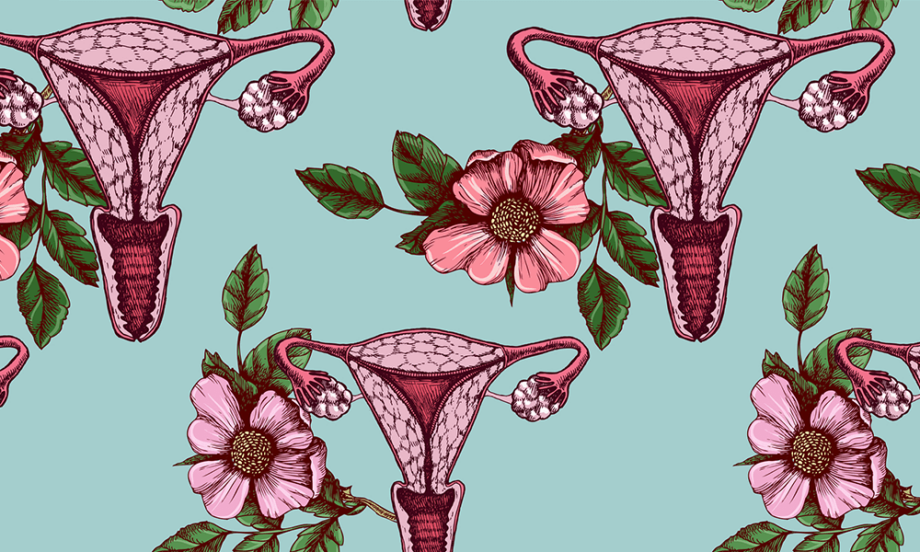Dara Howley tries to yell over the crowd, announcing her tour is about to begin. A group tries to squeeze over to her, but the place is so packed, it feels like you are going upstream no matter which direction you go. In the end, about twenty people manage to pool around her, eager to learn more about this unique museum.
“It’s called the vagina,” she begins. As good of a place to start as any.
The newly opened Vagina Museum in London has had a busy opening week filled with events and an endless flow of people. The first exhibition, Muff Busters: Vagina Myths and How to Fight Them, features multicolored panels around the room with information on vagina related topics. For example, why you shouldn’t douche with Coca-Cola (yup, that’s actually a thing that was popular in the 50s), why your vagina is perfectly fine without a bunch of products, and how the clitoris isn’t actually that hard to find. “As long as you aren’t a complete nob,” as Dara puts it.
The presentation of the exhibition is somewhat lackluster; it looks more like a school science fair than anything else. The information, however, is incredibly important.
“A recent UK survey,” continues Dara, “found that 45% of women could not locate the urethra (on a diagram of a vagina), and 43% could not correctly label the labia. That’s a lot of women who do not know their own bits!”
Not knowing your own bits or how to talk about them is incredibly problematic. Many people can’t say the word ‘vagina’ out loud without turning red. If vagina owners don’t know about, or can’t talk about, our anatomy, what happens when we need to talk to a partner about our pleasure or a doctor about our health?
Read: Why Understanding Our Sexual and Reproductive Anatomy Is So Important
This is part of the reason why the director of the museum, Florence Schechter, wanted to open the museum in the first place. Florence says she was inspired after finding out that there was an Icelandic Phallological Museum, but no vagina museum. The Penis Museum, as it’s often called, was opened way back in 1997 by someone who, judging purely from the museum’s Wikipedia page, was probably a really interesting character.
The Vagina Museum comes now; only 22 years later (just another example of men coming first), and there is still a long way to go. At least someone is finally doing it though.
Florence was able to raise £50,000 ($64,750USD) to create the museum, and judging from the popularity, it shouldn’t be difficult to raise more in the future. This is important because the museum is currently completely free, providing information to all who enter. (Like me though, you might be compelled to buy all sorts of vagina and clitoris themed merch in their gift shop.)
The Two Biggest Myths This Exhibition Busts
“Vaginas are smelly, unclean, and need to be washed with strong soaps.”
One panel is accompanied by a box of products meant to give your vagina that nip and tuck look and that new vagina smell. Everyone gathered around the box looked at it with confusion and horror. One product specifically, something called Virginity Soap, seemed particularly perplexing.
A number of these products are aimed at Asian or Middle Eastern women, so from a western perspective, it can be easy to separate ourselves from these types of products and say we wouldn’t do something like that. This however, is flat out just not true.
Go to your local grocery store and you will find all sorts of products that reinforce the idea that your vagina is not ok the way it is. In fact, Vaginal Rejuvenation surgery, which includes both Labiaplasty (removing part of the labia minora) and vaginal tightening surgery is the quickest growing form of cosmetic surgery in the world.
“You don’t need any of these products,” Dara says earnestly and repeatedly. Vaginas are self-cleaning, and unless something seems very unusual (in which case you should see a doctor), washing with water is enough. “Discharge can have its own smell,” says Dara. “It’s not floral, but it’s not supposed to be. Your armpits aren’t floral, your feet aren’t floral, we are not supposed to smell floral!"
This is not a small problem either. Non-medical vaginal products make up a $24 billion industry that doesn’t show any signs of decreasing. “It’s going to be hard to fight this myth that we need to put things in there to make it smell like fucking ocean breeze,” says Dara. “But we are going to do it.”
The other category of products in the briefcase against vaginas are vaginal tightening products. This is a marker of how much value many societies put on virginity and women who are not ‘loose,’ morally or otherwise. The premises for this whole thing is absurd though. The vagina is a muscle that tightens and stretches, and then goes back to how it was. No one has ever been able to prove any correlation between the frequency of penetration and the supposed ‘tightness’ of a vagina.
Read: 5 Myths OB/GYNs Want You to Stop Believing About Your Vulva
"Losing your virginity equals penis in vagina."
If asked when you lost your virginity, you would probably think about the first time you had penis in vagina penetration. While that may work for some, this definition excludes a lot of people.
What about people who experienced sexual abuse as children? Or people who are gay? Or people who have vaginismus, which makes penetration incredibly painful? The museum places a strong focus on the idea that losing your virginity is something that happens when you decide. It also doesn’t happen when riding a horse or inserting a tampon.
That brings us to the hymen, the new “it” topic when it comes to completely misunderstood anatomy. The hymen is a thin piece of membrane that covers most of the vagina at birth. “It’s the baby teeth of your genitals,” explains Dara.
As previously covered, the vagina is self-cleaning, but that superpower only comes with the production of estrogen, which doesn’t happen until puberty. Before then, the vagina can’t get rid of bacteria and infections on its own. Considering that babies spend at least a few minutes a day sitting in their own urine and feces, infections are clearly a possibility.
The hymen acts as a lid for the vagina, keeping it safe from intruding bacteria. Around three years old, that membrane starts to pull back and disintegrate, until a point where it rarely covers the whole entry to the vagina.
There is no possible way, let me repeat that, no possible way, to tell if a woman has had sex yet just by looking at her hymen.
Read: Your Vulva Isn't Ugly, It Just Looks That Way
More to Come
While the current exhibition focuses on vagina myths, the museum will feature various exhibitions and host a long list of special events throughout the year. There will also be monthly events like the PUB(e) quiz night, a book club called Cliterature, and a vagina themed bingo night called Bajingo.
Basically, if you like vaginas or vagina themed puns, the Vagina Museum is your place.

Shauna is a sex nerd and writer in Berlin. When not prying into peoples' sex lives, she is either teaching circus arts or hiding in a blanket fort with a big cup of coffee.




